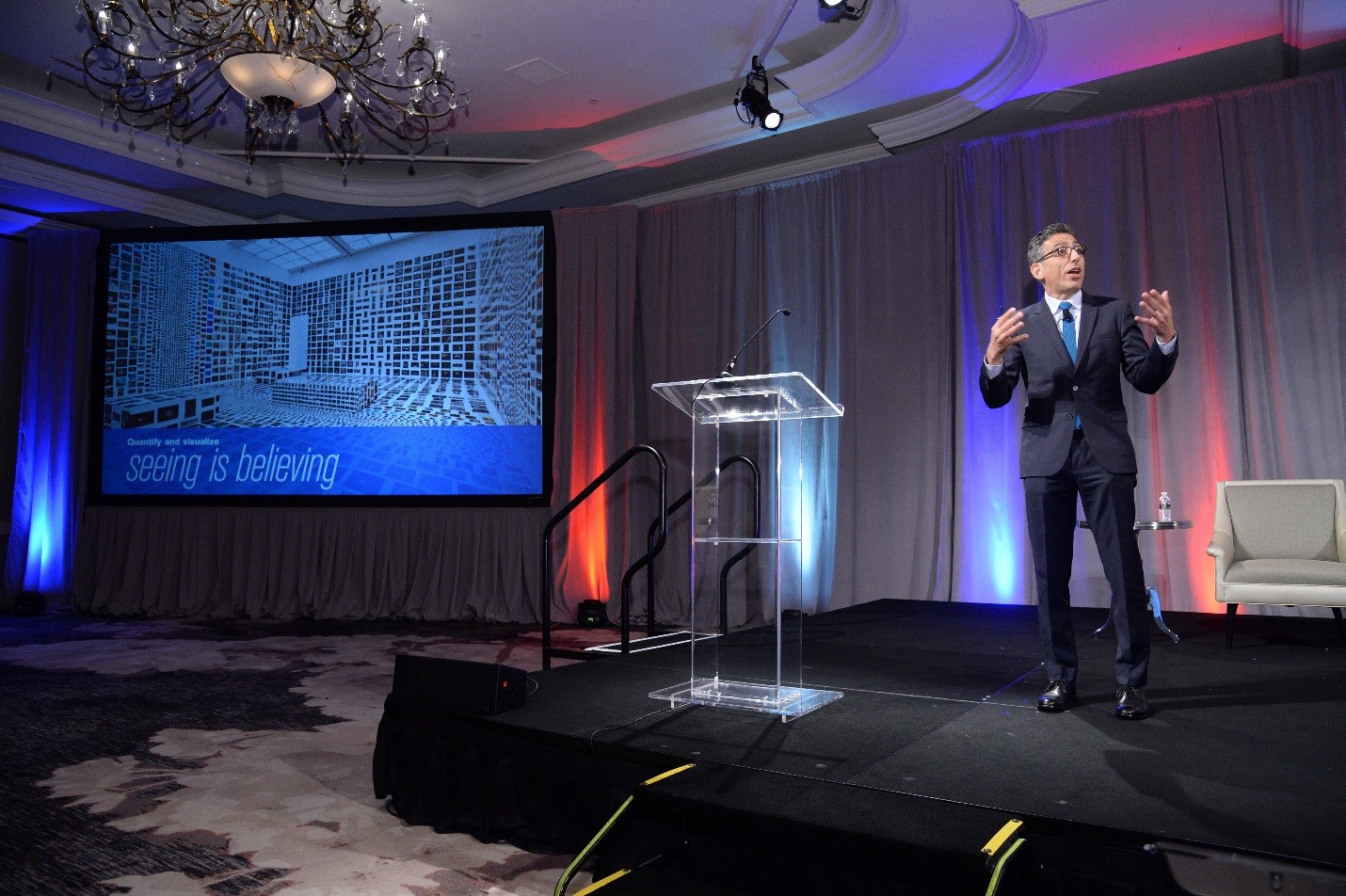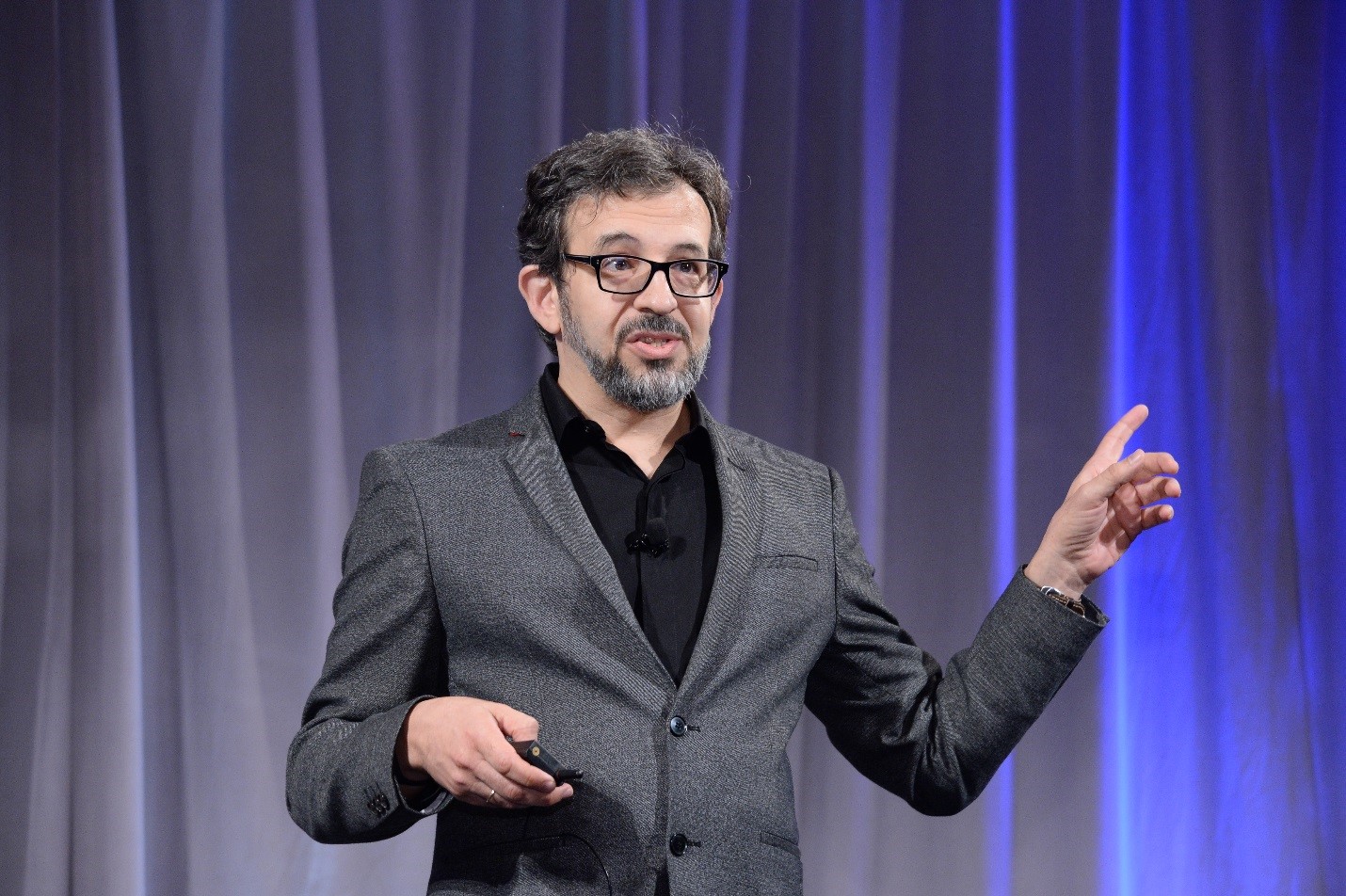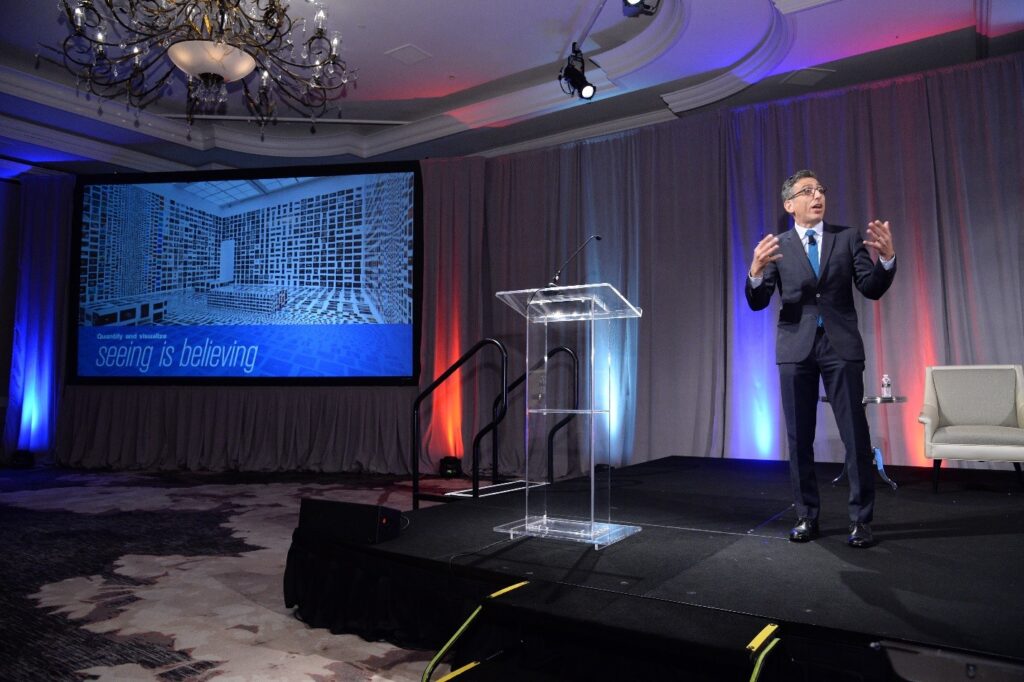Thank you to session sponsor, Freeman!
As humans become more involved with the digital age, we fear face-to-face interactions will become obsolete. However, at CEIR Predict, C-suite executives gather to dispel the idea that their industry will slowly disintegrate. Thought-leaders in various areas of expertise proved how human connection is and will continue to be a vital part of our society.
At the 2017 CEIR Predict session, The Intersection of Science and Creativity, marketer Haluk Kulin of FreemanXP and scientist Sergei Gepshtein of Salk Institute delved into how social and physical settings engage the brain using multiple channels that include the full gamut of human senses. The session explored how recent research from behavioral sciences and neurosciences can be used to guide strategic and creative design for events and exhibitions. They explained how new methods of sensory mapping can be applied to influence participant behavior to develop memorable experiences and inspire meaningful relationships. Event metrics and creative insights will no longer be limited to a “rear-view mirror” perspective.
With such a weighty topic of science and creativity, the speakers broke the session out in three main talking points that show organizers have on their mind regularly – data, science and metrics.
[wpvideo G6CVAirT]
Data
Data is this small word that has show organizers in a bind. We understand that data is important to the overall strategy of the show but we have so much information that we don’t know what to do with it. What do we do when it seems like we’re drowning in data instead of having the data be the anchor for the show?
Kulin explains how there a shift from physical to digital data and the future will be cloud data. The data that we create has “exponentially blown up” – doubling every two years! Although the digital revolution has been with us for 20 years, we’ve just entered its capacity in the past year.
What struck out from Kulin’s talk on data was his statement that “although we think we are in a digital world, we are very much analog minds.” Based on how we are raised, what we learn and our culture, we only believe what we see.

Studies have shown that the more time we spend on digital experiences, the less happy we are, less trust we have and the angrier we become. Bad news for digital, but great news for events! People want live experiences. If given a choice to either stream music or watch a live performance, people want to go to the concert. Why only listen to the music when a person can feel and engage with the music?
Events have a larger and wider bandwidth than other mediums on delivering a message. With events, all your senses are activated and you have a more engaging experience. The only problem is that we have not measured it until now. Change your thinking on data. Data is not about surveys and booths but understanding humans at a new level and being able to design experiences for them.
Science
People have this misconception that science is all about the hard facts and that there’s no room to deviate from the facts and be creative. For show organizers, science plays an important part in figuring out how to engage with attendees and how to design a positive and memorable experience for attendees.
Gepshtein’s overarching theme to his part of the session was, “The brain is selective. Experience has structure. Measure the structure.” Simply put, the brain takes in what it wants to take in and creates a structure for your experiences. What is it about that experience did you like? Why did that experience make you want to do X, Y or Z? Measure that structure so that you can design an experience that is beneficial for your attendees.

With the help of research and big data, we can in the near future design face-to-face experiences that will not only engage, but influence customers’ behaviors in desired ways. In effect, we will be able to “structure experiences” by leveraging the built environment. Experiences don’t take place in a vacuum, but inside “chambers” where sense perceptions differ dramatically from the ones occurring in other, adjacent chambers.
Neuroscience research is presented as a resource that offers objective metrics to help guide innovation to maximize the delivery of an in-person experience. The best use of such tools is studying and understanding the attendee experience at your show. The end goal of such analysis can help better design experiences that align with the end goals for organizers.
Metrics
As Kulin explained it, metrics is actionable data. Data is being gathered from many sources – registration, beacons, etc. Once the data is aggregated, what happens now? What insights can be extracted?
The answer is not in the data, but rather in the design of the experiences. We have to have a perspective on the outcome that we desire. Ask yourself, “How can I get to my desired outcome and what tools should I measure and build?”

Kulin gave a list to keep in mind when it comes measuring the data for events:
- Grow data networks
- If you know what to measure, you can grow your data networks
- Have an open-source mindset to your data
- Think about how you can access more data
- Orchestrate impact
- All about network thinking and utilizing your team to create an impact for your event
- Build on science, not research
- Understand why something is happening and how you can use the science to help better design your events
- Design forward
- You can’t monetize what you don’t measure
A story that Kulin shared was that of Vasily Alexeev, a famous weightlifter. He was someone who had the record to lift 500 pounds, but what was more impressive was that he broke 80 records after that! How did he do it? He increased how much he lifted by one pound.
But why just one pound? He knew that people would pay attention if he broke record after record instead of just breaking one record going from 500 pounds to 580 pounds. Kulin shared this story to show that we need to design our rewards for the culture. If you do not reward your team for each little success, there will be no drive for results. As a show strategist and leader, you have to make sure metrics drive result.
Final Thoughts
Show organizers have to constantly think about data and metrics to improve their show. It may seem that digital and face-to-face are in competition with one another, but that’s far from the truth. Humans will always need the interaction of one another because live experiences provide engagement and activates all our senses. As we move forward and integrate data into our events, we must retain the human perspective that is still the fundamental driving force of each interactive experience.

For this and other insightful commentary on the future of exhibitions, we invite you to apply for registration for the 2018 Predict conference, taking place on 13-14 September at the MGM National Harbor in Oxon Hill, MD.
